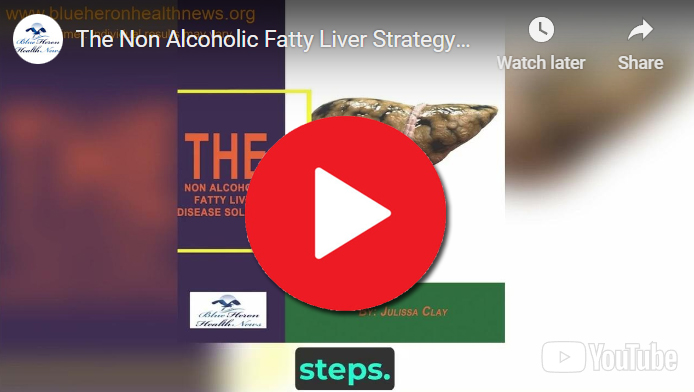
The Non Alcoholic Fatty Liver Strategy™ By Julissa Clay the program discussed in the eBook, Non Alcoholic Fatty Liver Strategy, has been designed to improve the health of your liver just by eliminating the factors and reversing the effects caused by your fatty liver. It has been made an easy-to-follow program by breaking it up into lists of recipes and stepwise instructions. Everyone can use this clinically proven program without any risk. You can claim your money back within 60 days if its results are not appealing to you.
How do socioeconomic factors affect fatty liver disease in the USA?
Socioeconomic factors have a significant impact on the prevalence, management, and outcomes of fatty liver disease (FLD) in the USA. Key socioeconomic factors that influence FLD include income levels, education, access to healthcare, and neighborhood environments. Here’s how these factors affect FLD:
1. Income Levels and Access to Healthy Foods:
- Food Access: Lower-income households often have limited access to affordable, nutritious food, leading to a diet high in processed foods, added sugars, and unhealthy fats—all linked to a higher risk of developing FLD.
- Food Deserts: Many low-income communities are located in “food deserts,” areas with limited access to fresh fruits, vegetables, and other healthy foods. This lack of access makes it harder to maintain a liver-friendly diet.
- Cost of Healthy Eating: High-quality, nutrient-dense foods, such as fresh produce, lean proteins, and whole grains, can be more expensive than processed, calorie-dense options, making it challenging for low-income individuals to eat in a way that supports liver health.
2. Healthcare Access and Preventive Services:
- Limited Access to Healthcare: Individuals with lower socioeconomic status are more likely to be uninsured or underinsured, which limits their access to regular healthcare visits, screenings, and early intervention for FLD.
- Delayed Diagnosis: Due to barriers in healthcare access, people from lower socioeconomic backgrounds are often diagnosed at later stages of FLD, when the disease has progressed to more severe forms, like nonalcoholic steatohepatitis (NASH) or cirrhosis.
- Fewer Preventive Services: Socioeconomic barriers may limit access to preventive services, such as liver function testing, dietary counseling, and regular monitoring, which are crucial for early management and reducing FLD progression.
3. Education and Health Literacy:
- Knowledge Gaps: People with lower levels of education may have limited awareness of FLD risk factors, symptoms, and the importance of a liver-friendly lifestyle. This lack of knowledge can contribute to behaviors that increase the risk of FLD, such as a poor diet, physical inactivity, and high alcohol consumption.
- Health Literacy: Low health literacy can make it difficult for individuals to understand medical advice, follow treatment plans, or recognize the importance of regular checkups and screenings for FLD. It can also impact their ability to navigate healthcare systems effectively.
4. Neighborhood and Environmental Factors:
- Built Environment: Low-income neighborhoods often lack safe, accessible spaces for physical activity, such as parks or recreational centers. A sedentary lifestyle, exacerbated by these environmental barriers, can contribute to obesity and insulin resistance, which are major risk factors for FLD.
- Pollution and Toxins: Some studies suggest that living in areas with high pollution levels may increase the risk of liver diseases due to exposure to environmental toxins. Low-income communities are more likely to be located near industrial areas with higher pollution levels, potentially increasing their risk.
5. Stress and Mental Health:
- Chronic Stress: Socioeconomic hardship often leads to chronic stress, which can result in hormonal imbalances that impact weight and blood sugar regulation, both linked to FLD. Chronic stress can also lead to behaviors such as emotional eating or increased alcohol consumption, further impacting liver health.
- Mental Health Access: Individuals with low socioeconomic status may have limited access to mental health resources, making it harder to manage stress and reduce behaviors that can exacerbate FLD.
6. Alcohol Consumption and Substance Use:
- Higher Alcohol Use in Certain Populations: While alcohol use varies across socioeconomic groups, some lower-income populations may experience higher rates of alcohol misuse, a risk factor for alcohol-related fatty liver disease.
- Limited Access to Substance Abuse Programs: Individuals in low-income communities may lack access to affordable substance abuse programs, which are crucial for reducing the risk of alcohol-induced liver damage.
7. Impact on Treatment Adherence and Outcomes:
- Medication Costs: The cost of medications for managing FLD-related conditions, such as diabetes and high cholesterol, can be prohibitive for low-income individuals, reducing treatment adherence and worsening disease outcomes.
- Access to Specialized Care: Socioeconomic barriers may limit access to liver specialists, dietitians, and other healthcare providers who can offer comprehensive management of FLD.
Addressing Socioeconomic Disparities in FLD:
To mitigate these effects, strategies such as expanding access to healthy foods, improving healthcare coverage, enhancing health literacy, and creating safe, active spaces in low-income neighborhoods are crucial. Increased public health initiatives and targeted interventions can help address these socioeconomic barriers, supporting better prevention, early detection, and management of FLD across diverse communities.

The Non Alcoholic Fatty Liver Strategy™ By Julissa Clay the program discussed in the eBook, Non Alcoholic Fatty Liver Strategy, has been designed to improve the health of your liver just by eliminating the factors and reversing the effects caused by your fatty liver. It has been made an easy-to-follow program by breaking it up into lists of recipes and stepwise instructions. Everyone can use this clinically proven program without any risk. You can claim your money back within 60 days if its results are not appealing to you